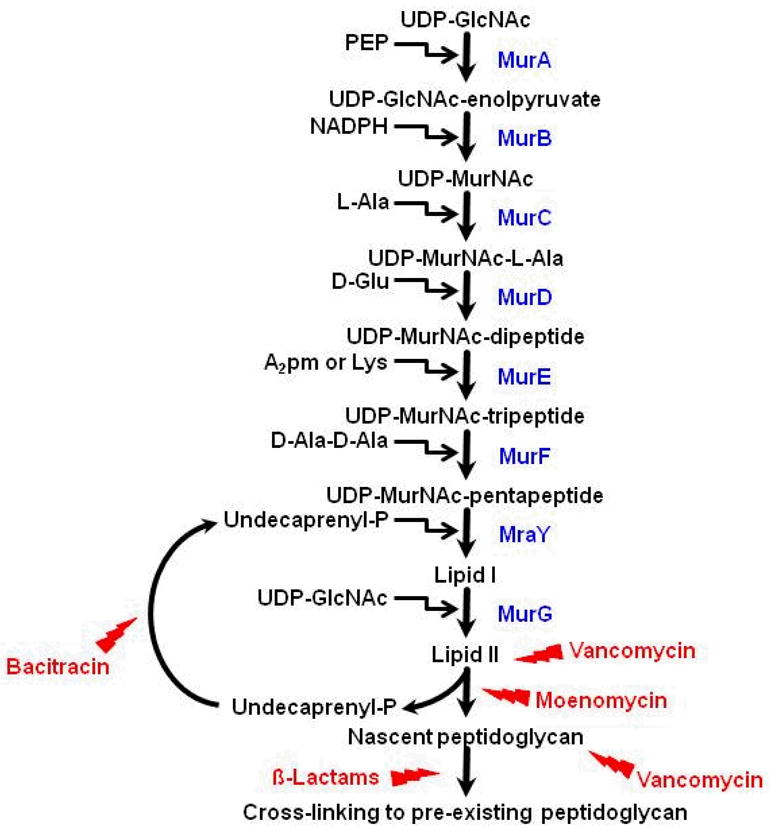Fig. 4.

The biosynthetic pathway of bacterial murein. The pathway initiates with committing steps, generating UDP-acetylmuramic acid (UDP-MurNAc). L-alanine, D-glutamic acid, lysine or diaminophenolic acid, and D-alanyl-D-alanine are enzymatically added to UDP-MurNAc in a stepwise manner. The formation of UDP-acetylmuramyl-pentapeptide (UDP-MurNAc-pentapeptide) occurs in the cytoplasm. Then, the UDP-MurNAc-pentapeptide is transferred to the cytoplasmic membrane where two lipid carriers (Lipid I and Lipid II) are involved in the joining of UDP-MurNAc-pentapeptide and UDP-acetylglucosamine (UDP-GlcNAc) to form a linear murein with protruding short peptide chains. Finally, the linear murein chains are cross-linked with each other and to pre-existing murein. A few chemical compounds are known to block this pathway. β-lactams are known to inhibit the cross-linking, whereas bacitracin inhibits the recycling of undecaprenyl. Moenomycin and vancomycin inhibit the function of Lipid II that carries the disaccharide peptide monomer units.
